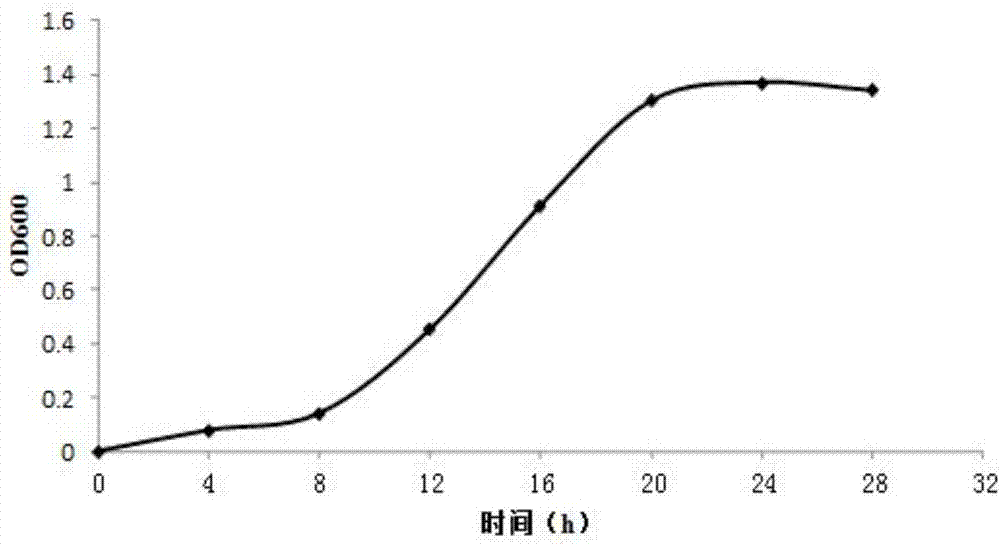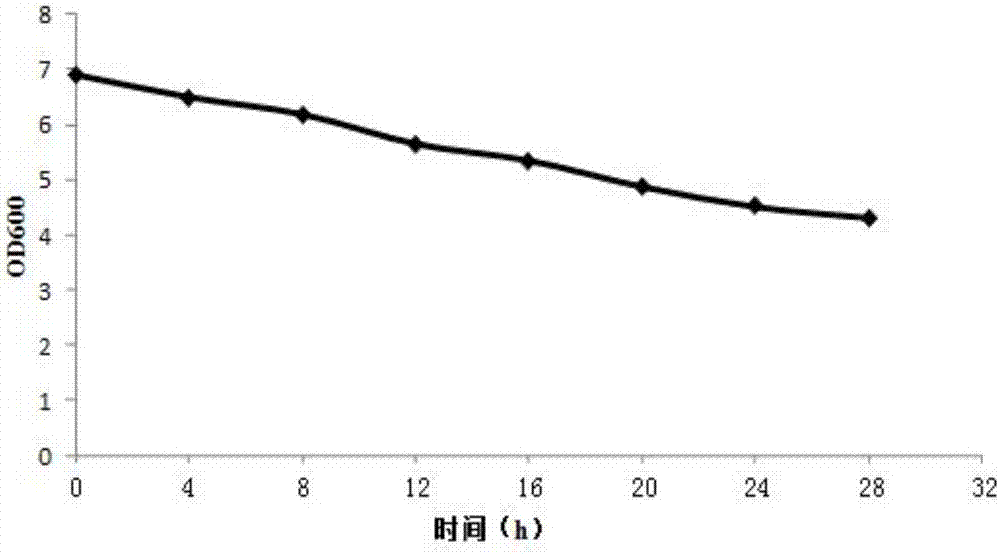Lactobacillus paracasei and application thereof
A technology for Lactobacillus paracasei and paracheese, applied to Lactobacillus paracasei and its application field, can solve the problems of poor flavor, taste of vermicelli, decreased texture and the like, and achieve the effects of preventing rapid spoilage, facilitating intestinal digestion, and efficiently utilizing
- Summary
- Abstract
- Description
- Claims
- Application Information
AI Technical Summary
Problems solved by technology
Method used
Image
Examples
Embodiment 1
[0027] Embodiment 1: the screening of bacterial strain
[0028] The bacterial strain of the present invention adopts the plate dilution separation method to isolate and screen the bacterial strain with good antibacterial effect from sauerkraut samples.
[0029] The isolation screening method is as follows:
[0030] 1. Dilution of mixed strains: From the purchased sauerkraut samples, put 1g of sauerkraut into MRS medium for 24 hours at 37°C, and perform gradient dilution of the strains.
[0031] 2. MRS medium: peptone 10.0, beef extract 8.0, yeast powder 4.0, glucose 20.0, dipotassium hydrogen phosphate 2.0, triammonium citrate 2.0, sodium acetate 5.0, magnesium sulfate heptahydrate 0.58, manganese sulfate tetrahydrate 0.25, Tween 801ml, 1L distilled water, sterilized at 115°C for 20 minutes.
[0032] 3. Preliminary screening of bacterial strains: 100 microliters of the bacterial solution after gradient dilution was applied to the MRS solid medium plate added with bromocresol...
Embodiment 2
[0038] Embodiment 2: Identification of physiological and biochemical characteristics of Lactobacillus paracasei DY2
[0039] Physiological and biochemical characteristics:
[0040] (1) Litmus milk experiment: Milk mainly contains lactose and casein, in which litmus is added as indicator and redox indicator, litmus is lavender when neutral, pink when acidic, blue when alkaline When the color is restored, the milk fades from top to bottom and returns to white. Lactic acid bacteria ferment lactose to produce acid, litmus turns red, and when the acidity is high, it can make milk coagulate. Observe the results of the litmus milk experiment after inoculation and cultivation, and observe the acid production and coagulation reaction of litmus milk after culturing at 37°C for one day.
[0041] (2) Determination of catalase: inoculate the experimental bacteria on the slant of the PYG medium, cultivate at 37°C for 24h, take the culture, apply it on a clean glass slide, and then add 5% ...
Embodiment 3
[0057] Embodiment 3: Bacteriostasis research of Lactobacillus paracasei
[0058] Preparation of indicator bacteria liquid: Escherichia coli, Salmonella and Staphylococcus aureus were inoculated in LB liquid medium and cultured at 37°C for 24 hours.
[0059] Adopt the Oxford cup method: take a plate with a diameter of about 90mm, pour 18-20mL of heated and melted nutrient agar medium into the plate, spread it evenly in the plate, place it on a horizontal platform to solidify, and use it as the bottom layer. Take an appropriate amount of semi-solid nutrient agar medium (1% agar content) and heat it to melt, let it cool to 48-50°C, add 0.1-0.2mL of indicator bacteria suspension to 50-100mL of medium, and add 0.1-0.2mL of indicator bacteria suspension to each plate. Add 5mL to each of them to make it spread evenly on the bottom layer as a bacterial layer. Place 4 Oxford cups evenly at equal distances on each plate, drop 200 μL of lactic acid bacteria supernatant into each Oxford ...
PUM
 Login to View More
Login to View More Abstract
Description
Claims
Application Information
 Login to View More
Login to View More - R&D
- Intellectual Property
- Life Sciences
- Materials
- Tech Scout
- Unparalleled Data Quality
- Higher Quality Content
- 60% Fewer Hallucinations
Browse by: Latest US Patents, China's latest patents, Technical Efficacy Thesaurus, Application Domain, Technology Topic, Popular Technical Reports.
© 2025 PatSnap. All rights reserved.Legal|Privacy policy|Modern Slavery Act Transparency Statement|Sitemap|About US| Contact US: help@patsnap.com



